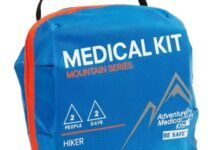Its been several years since the Automatic Identification System (AIS) became a mandated way of life for the commercial side of the marine industry. We added an AIS receiver to the nav station aboard our Mason 43, Southern Cross, when one came on the market, and after using it for the last three or four years in some of the most heavily traveled waters of the world, it has become one of the more valuable electronics onboard.
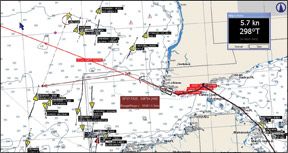
All photos by Joe Minick
Where once we relied on radar and a good set of field glasses-and still do-AIS has added a whole new dimension to collision avoidance. Yet, its not uncommon to hear statements like AIS “is only useful in the open ocean” and other questionable arguments for ignoring its potential as a safety tool. So, in this report, we take an inside look at the value of operational AIS for the rest of us.
AIS Overview
In a nutshell, AIS is a seemingly simple system that transmits dynamic information about a vessels speed, course, and position plus static information including the vessels name, call sign, and Mobile Maritime Service Identity (MMSI) number over marine VHF frequencies (see table page 14). AIS receivers listen for that information as its sent by any AIS transceiver-equipped vessels that are in range, and AIS transceivers transmit and receive the data.
In actual practice, its far from simple. A fair bit of effort went into developing a protocol for a shipboard system, without any central control, that can manage data transmissions by an unknown number of vessels that appear and disappear at random. The result was a self-managing network that alternately transmits on two VHF channels, known as AIS 1 and AIS 2, using a system of automatically assigned time slots to prevent one vessels transmission from blocking another.
Initially, there was only a Class A AIS system intended for larger commercial vessels, but the recent introduction of a Class B system for small craft that do not need to meet the International Maritime Organizations (IMO) AIS requirements has changed the landscape significantly. The two systems are operationally similar but include important differences that affect the operational aspects of AIS interpretation. Most notable are the differences in transmit power, the type of data transmitted, and the requirement for Class B AIS to avoid interference with Class A systems.
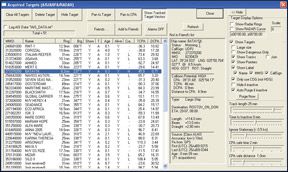
unless noted
Operational Factors
AIS is a tool to reduce the hazard of collision with another vessel, and from a small-boat standpoint, this basically means not placing your vessel in the path of another. Both the International Regulations for Avoiding Collision at Sea (commonly called COLREGS) and the U.S. Inland Navigation Rules spell out the maneuvers required of all vessels when avoiding collision. Correctly interpreting AIS information to accomplish this requires a working knowledge of AIS characteristics.
From an operational standpoint, its useful to have an understanding of the timing and content of messages that AIS transceiver-equipped vessels transmit. However, the format and presentation of the information you actually see is determined by the type of display you are using on your own boat. This can be a simple textual display of the transmitted data, a radar-like display with the range and bearing of AIS targets, or a more detailed view of traffic displayed directly on a digital chart, complete with past tracks and course predictors.
AIS transmissions can be received using standalone AIS receivers. The characteristics of an AIS receiver may not be the same as those used with certified AIS systems, and its important to know what, if any, differences you might encounter with a specific receiver. Some AIS receivers can receive only on one AIS channel at a time, even though you may be able to select either channel for use. AIS transmissions are sent by alternating between the two AIS channels, so a single-channel receiver will only receive every other message sent. The result is slower updating of any targets position as it moves. Also, depending on make and vintage, some AIS receivers cannot decode and display information received from the newer AIS-B systems, so these vessels wont show up on the display at all.
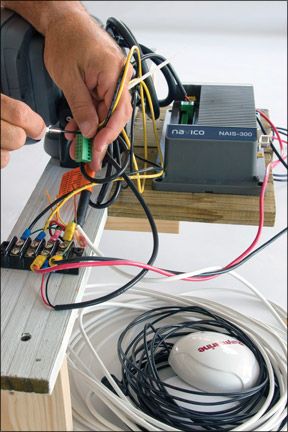
In day-to-day operation, there are significant differences between radar and AIS traffic displays, and its a mistake to think that AIS is an acceptable substitute for radar. Obviously, rocks and obstructions never transmit AIS information, but neither do military vessels and a high percentage of the worlds small craft.
System integrity is another consideration. If your onboard radar system is functioning normally, it will provide you with information about any target that can reflect radar frequencies. On the other hand, even though you have a fully functional AIS device, you are still dependent on the messages transmitted by other AIS devices, and they do fail. We have seen several instances of intermittent or just plain missing AIS transmissions from larger commercial vessels that were presumably required to have operational AIS installed.
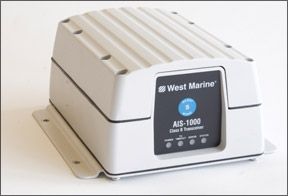
AIS does have several advantages that truly enhance collision avoidance. It can track multiple targets in an active seaway without suffering loss of lock or confusion between targets, a common problem with the Mini Automatic Radar Plotting Aid (MARPA) feature found on many small boat radar systems. Course changes made by other vessels are seen almost as soon as they occur, and track lines created from earlier position reports are useful when estimating possible future course changes. Information about the ships size, radio call sign, and MMSI can be used if contact with another vessel is needed to ensure safe passage, and rapid updating of the closest point of approach (CPA) is very helpful in rapidly changing conditions.
Unlike radar, when a vessel being tracked by AIS moves out of range, the last message received is still in use, and unless provision is made to remove it, the target vessel continues to be displayed in the last known position even though it may be miles away at the time. The last known speed and course are still available, so the relative motion of your own vessel produces very realistic-looking figures for the CPA calculation and may even trigger a warning of a potential collision with this ghost vessel as you approach. The clue to detecting this phenomenon is the time stamp included with each update that indicates how old the last message really is.
Operating on VHF frequencies limits the AIS system to line-of-sight communication, but the actual range has proven to be more than was initially expected by many users. Traffic can easily be seen at 20 to 25 miles with a stern-rail mounted antenna, and a useful range of 60-plus miles isn’t uncommon with a higher masthead antenna. Obstructions are also less of a factor than might be expected. Transmissions from AIS-equipped vessels can often be received even when the signal path appears blocked by higher terrain and other obstructions.
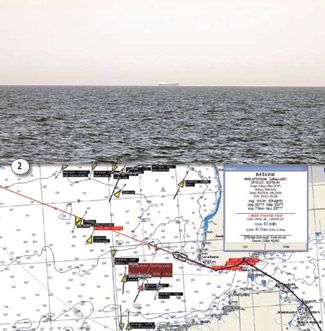
Photos by Al Herum
Putting AIS to Work
The messages broadcast by AIS-equipped vessels contain the raw data, but theres still a fair bit of processing required to convert this into information that can be easily used to assess the potential conflicts with other ships. The most critical work is constantly calculating the closest point of approach between your vessel and others in your area. The CPA is often expressed in several formats including your predicted position at the CPA (lat/long), the distance, bearing, ETA to this position, and the all-important estimate of the distance or clearance between your vessel and the conflicting vessel.
Once the CPA has been computed, the display system can use this information to help you better assess the situation. Visual and audible alarms can alert you to potential conflicts that are still miles away, allowing early adjustments in course and speed to resolve the conflict. The rapidly updated CPA shows the results of any adjustments in course and speed made by either vessel, but its equally important to recognize that the CPA is only a prediction and requires careful monitoring.
The display software determines how the CPA is displayed, and its important to understand exactly what format is being used and what its telling you. Confusing the distance to the CPA with the separation predicted at the CPA could be disastrous. A potential problem exists with CPA information in the more standard formats. The location of the CPA and the separation distance don’t convey enough information to accurately determine the relative geometry of the two vessels at the CPA.
With a typical chartplotter display, it may be possible to see the relative positions of the two vessels when passing abeam, but a crossing situation can still be difficult to assess accurately. For the prudent skipper, crossing a mile or so behind a fast-moving merchantman might be acceptable but crossing ahead of one would certainly get your attention under the same circumstances. Some display systems include special functions to show the crossing situation at the CPA, and if you are planning a new installation, consider choosing one with this
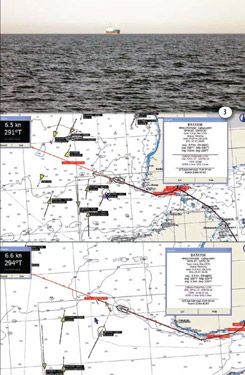
capability.
Whether you display AIS information on a dedicated display, a chartplotter, or PC, there are still several setup options that determine how and what you actually see. Inevitably, these are set to default values by the manufacturer, so the system will be functional when first installed, but accepting these default values without being aware of their implications can lead to a serious misunderstanding of what the system is or isn’t telling you. Setup parameters and options can vary somewhat, but all need to be considered carefully.
Automatic purging or removing of targets that are no longer updating is a feature that solves the problem of lingering images of vessels that are no longer communicating with the AIS network. The user can often decide whether to enable this function and input how long to wait after the last update before purging takes place. However, you should understand the potential consequences when making these choices. If this feature is disabled, the update times must be manually checked to determine the age of the targets transmission, a time-consuming task in heavy-traffic areas. If its enabled and updating is lost for any reason, including a system failure, the target will no longer be displayed, even though it could potentially remain a serious threat.
Its also possible to request that the system not display stationary vessels or vessels whose speed is less than a selected value. This has some value in removing clutter from an overloaded display but requires an understanding of the potential for unexpected surprises when this feature is enabled. These vessels will still be there even if you arent seeing them on the display. When closing the shore to clear a busy channel on a dark night, the lights of moored vessels along a busy shoreline can be easily overlooked. In busy areas, tugs, fishing boats, ferries, and others get underway at random. Many will be broadcasting AIS messages that can provide valuable insight to the local situation.
Alarm Settings
Alarms can usually be configured to alert you to potential conflicts with other vessels. Inevitably, the parameters required to trigger an alert are based on CPA calculations that are compared to values input during system setup. These parameters should be chosen with care and with the understanding that you will probably need to adjust them occasionally to fit the area you are navigating through. Understanding exactly how these alerts are generated on your system is essential.
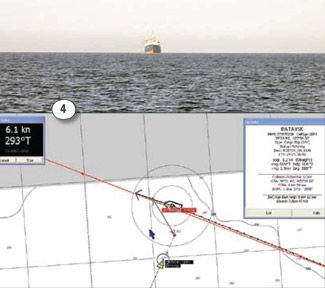
The most common approach requires the user to input a minimum separation distance and/or time at the CPA. Once this is done, any time the predicted CPA is less than the selected value, the alert is given. This method has the advantage of warning the crew of a potential conflict while the vessels are still miles apart rather than waiting until the minimum CPA is reached. Not all alarm functions are alike, and a working knowledge of the alarms included with your specific system is a must.
Consider the alarm parameters with care. If you don’t have the ability to determine the exact geometry of a crossing situation select a distance that you would be comfortable with when crossing ahead of another vessel, double it, and then still worry about it. Its easy to get closer, but its surprisingly hard to increase your separation in the last mile or so. Keep in mind that the CPA is only a prediction and has a way of changing, usually for the worse, as you close with other vessels.
AIS Underway
To examine the full potential of AIS, we put it to use crossing traffic in an area near Turkeys Dardanelles Strait that is known for unusually heavy traffic, but devoid of any traffic separation scheme to regulate its flow.
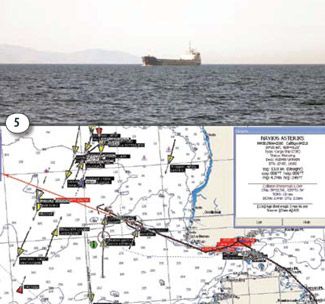
Although there were some predictable routes, i.e. a northerly or southerly flow, vessels can be found traveling in almost any direction through this area. The crossing was made with good visibility, with a constant lookout on deck, and a radar watch supplementing the AIS device. SOBvMAX charting software with AIS capability (reviewed in October 2007 issue) running on an onboard computer was used to display AIS targets received from a single-channel AIS receiver. The softwares ability to display crossing geometry at the CPA proved to be invaluable. A 4-foot long AIS antenna was rail-mounted 8-feet above the waterline.
Putting it all Together
The sequence of photos on these pages shows the view from deck and near simultaneous images from our onboard computer running SOBvMax software. These photographs were taken with a telescopic lens, so the approaching vessel was actually further away than how it appears here. Tracking the displayed information and how we used it offers a good illustration of the usefulness-and possible pitfalls-of AIS.
In comparing our observations from the deck and the radar watch with the information supplied by AIS system, several differences were readily apparent. Most of the actions taken to resolve conflicts actually took place before the deck watch had enough visual information to act based on their own observations, often before the other vessel was even in sight from the deck. Although the target was readily in sight on the radar display, which was not equipped with Mini ARPA, it was difficult to manually plot a close crossing scenario from several miles away with any degree of accuracy.
We needed to establish the other targets track relative to our own and to estimate the CPA. In addition, tracking the multiple targets created high levels of workload for the navigator. This generally resulted in the need to make larger corrections to ensure adequate separation; these corrections were generally started later than those made using AIS data. However, larger corrections create their own problems in high-density traffic areas by generating more conflicts with other traffic. These secondary conflicts might have been avoided if a more judicial adjustment were possible.
Mini ARPA would have been a plus, but this feature is still limited by the number of targets it can track simultaneously. AIS information was a noticeable improvement over the other methods employed, and the best of all worlds might well be one of the newer chartplotter/radar display that can overlay a radar image on the AIS target as well as find those other things that go bump in the night.
The Caveats
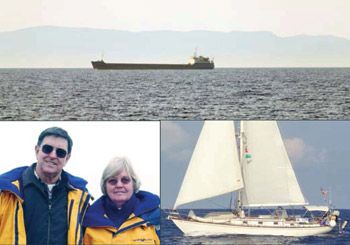
This evaluation was done in high-density traffic where one must accept less than ideal separation to accommodate the increased traffic flow. Doing this also reduces the margin of safety and significantly increases the need for accurate and careful navigation. In our view, this passage would have been ill-advised in bad weather or conditions of poor visibility.
Nothing is predictable. Halfway through the passage, we observed a large northbound merchantman begin a wide sweeping 180-degree turn and return to the south. This would be extremely difficult for a shorthanded crew to cope with on a dark night if they were relying only on observations from the deck as numerous other vessels altered course around them.
Every skipper must decide what constitutes a safe separation between his vessel and others. All maneuvers to avoid a collision must be conducted in accordance with the COLREGs, even though it might look like a turn the other way would actually be better.
The other vessel will take any required action based on the assumption that you will follow standard collision avoidance rules. Its understandable that some will take exception to crossing the bow of an oncoming commercial vessel with 1.5 nautical miles of clearance. High-density traffic creates these situations where the margin is barely acceptable.
For another opinion, we interviewed two merchant captains who were familiar with this area, and neither was uncomfortable with a crossing at this distance provided that it was done in settled weather with good visibility. Prudence dictates the need for wider separation whenever circumstances would permit it.



























